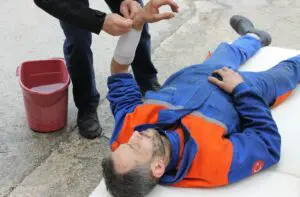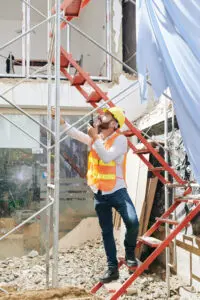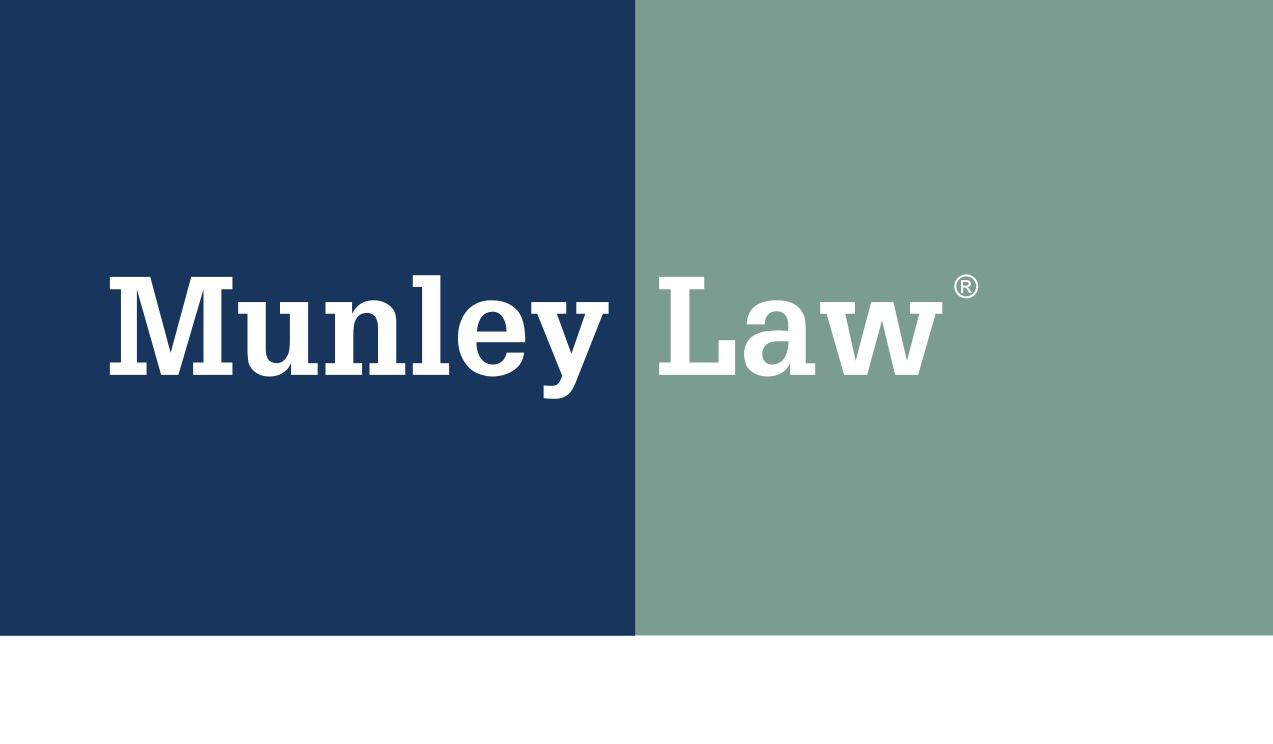Common Causes of Workplace Falls
Workplace falls are one of the top reasons for injuries in many different jobs. They often happen because of a mix of environmental issues, building problems, and human mistakes. These falls can take place anywhere, often due to dangerous situations like slippery floors, equipment that isn’t well taken care of, or poor lighting.
Distractions, tiredness, and wearing the wrong shoes can also lead to these accidents. By knowing what usually causes these falls and taking steps to fix them, we can lower the chances of getting hurt. This blog will look into the main reasons behind workplace falls and offer safety advice and legal options for those who these incidents have impacted
Environmental Hazards Leading to Workplace Falls
Workplace falls are often caused by environmental hazards, making it necessary to be aware of potential risks. Wet and slippery surfaces, whether from spills, cleaning, or weather conditions, can create dangerous conditions for employees. Uneven flooring and walking surfaces associated with raised tiles, carpets, or poorly maintained floors pose a significant trip hazard.
Hidden floor defects, like cracks or holes, are also common culprits that can cause accidents. These hazards are often overlooked but can lead to serious injuries if not addressed. Protect yourself – report unsafe floor conditions to your supervisor immediately. Taking action helps create a safer workplace for everyone.
Workspace Organization and Maintenance Issues
A cluttered workspace can lead to dangerous falls and injuries. Improperly stored equipment, such as tools, materials, or boxes, can create tripping hazards and obstruct walkways. Tangled electrical cords, often found in high-traffic areas, pose a significant risk as they can easily trip workers.
Unexpected obstacles, like misplaced objects or cluttered aisles, further contribute to accidents. These issues can disrupt the flow of work and increase the likelihood of falls, leading to potential injuries. Keep your workspace clean and organized to prevent potential fall risks. A tidy environment promotes safety and productivity for everyone.
Poor Visibility and Lighting
Inadequate workplace illumination can significantly increase the risk of falls and accidents. Poor lighting makes it difficult to see hazards, such as obstacles or uneven surfaces. Shadows and blind spots create areas where potential dangers are hidden, leading to unexpected trips.
Glare from overhead lights or windows can also cause temporary blindness or disorientation, making it harder to navigate safely. Advocate for proper workplace lighting to ensure your safety. Well-lit environments help you spot hazards quickly, reducing the risk of accidents and improving overall workplace safety.
Weather and Seasonal Risks
Weather conditions pose significant risks in the workplace, especially during winter and rainy seasons. Water and ice tracked into the building can create slippery surfaces, increasing the likelihood of falls. Mud and debris from outdoor areas also contribute to hazardous walking conditions, making floors slippery and uneven.
Seasonal maintenance challenges, like snow accumulation or wet floors, can make it difficult to maintain a safe environment. Use caution during inclement weather and wear appropriate footwear. Being mindful of these conditions helps reduce the risk of falls, ensuring your safety and the safety of others around you.
Employers should also implement proper cleaning protocols to address wet or icy conditions promptly. Installing mats or rugs at entrances can help reduce water and debris buildup. Regularly inspecting and maintaining outdoor walkways and parking lots can also minimize hazards caused by weather-related factors.
Equipment and Structural Risks

Equipment and structural hazards are common causes of workplace falls. Faulty ladders and scaffolding can lead to dangerous accidents — especially when not properly maintained. Improper equipment maintenance, such as broken or malfunctioning tools, can also create unsafe working conditions.
Inadequate safety guardrails or missing barriers around elevated areas can also leave workers vulnerable to falls. These risks can be prevented through careful attention to equipment conditions and workplace infrastructure. Always inspect equipment before use and report any defects.
Proactively addressing safety concerns helps prevent accidents and ensures a safer working environment for everyone. Regular maintenance and timely repairs go a long way in minimizing risks and maintaining operational safety. By fostering a culture of safety awareness, all employees contribute to a secure and productive workplace.
Human Factors Contributing to Workplace Falls
Human factors are often at the heart of workplace falls, as certain behaviors or physical conditions can increase the likelihood of accidents. One significant factor is fatigue. When workers are tired, their focus and reaction times can be impaired, making it harder to notice hazards or respond to them in time. Similarly, distraction — whether from personal issues, devices, or multitasking — can cause workers to overlook obstacles, creating an increased risk of trips and falls.
Another major contributor is inappropriate footwear. Wearing shoes without proper support, grip, or slip resistance, especially in environments with wet or uneven floors, can lead to falls. For instance, high heels, sandals, or shoes with worn-out soles increase the likelihood of slipping or tripping.
Rushing and multitasking also play a significant role in workplace falls. When workers try to complete tasks quickly or juggle multiple responsibilities at once, they may become careless and neglect safety precautions. This haste can lead to missteps or poor decisions that compromise personal safety, such as skipping safety checks or rushing through hazardous areas without being alert.
Stay alert and prioritize your personal safety at work. Avoid distractions, wear proper footwear, and take breaks when needed to ensure you’re fully focused. By staying mindful of these human factors, you can help prevent accidents and maintain a safe working environment.
Legal Recourse for Workplace Fall Injuries
 If you’re injured in a workplace fall, you may have legal options to seek compensation. Workers’ compensation claims can cover medical expenses and lost wages, regardless of fault. In some cases, a personal injury lawsuit may be an option, especially if a third party’s negligence contributed to the fall.
If you’re injured in a workplace fall, you may have legal options to seek compensation. Workers’ compensation claims can cover medical expenses and lost wages, regardless of fault. In some cases, a personal injury lawsuit may be an option, especially if a third party’s negligence contributed to the fall.
Employers may also be held liable if they fail to provide a safe working environment or address known hazards. Consult with Munley Law if you’ve been injured in a workplace fall. Our experienced workers’ compensation attorneys can help you make sense of the legal process and secure the compensation you deserve.
Posted in Workers' Compensation.
Tagged Fault Hazard Negligence









